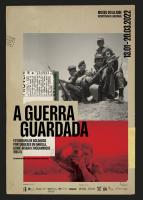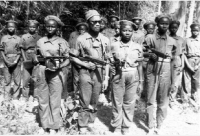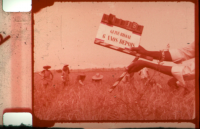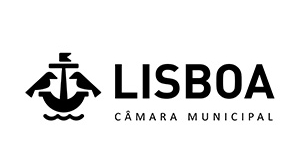Guinea Bissau
Articles tagged with Guinea Bissau
Tag Archive
- (Re)Imagining African Independence
- 1:54
- african citys
- african studies
- afro-music
- agronomy
- Alcindo Monteiro
- Alex kahl
- Andanças
- angolana music
- anthroponyms
- art as activism
- artivism
- artworks
- atafona
- autonomy
- Baía
- Benoît Fossouo
- Bienal de S.Paulo
- Biennial – S. Tomé
- black film festival
- Boaventura Sousa Santos
- buala archive
- carbono
- Central African Museum at Teruvren
- chineses
- cultural
- Danting Chen
- descolinizar museus
- Diário de um etnólogo guineense na Europa
- Diáspora
- Dictatorship
- dj marfox
- Duplo Vê
- erosion
- eurocentrism
- europa oxalá
- Festival of Essaouira Gnaoua
- Fiction
- Fim do Mundo
- France
- freedmon
- Frelimo
- game
- govern
- hangar
- Hannah Arendt
- havana
- History
- hospitalidade
- immigrant
- imperialism
- independence
- jazz
- jina mahsa amini
- Jomo Fortunato
- kurdish
- labels
- land-ing
- Lisboa
- Lost lover
- Malangatana
- Malcom X
- mamela nyamza
- man
- Marcelo Ridenti
- Maria Vlachou
- marroco
- Marsha P. Johnson
- marxism
- memoirs
- Munique
- música
- namibe desert
- Neliswe Xaba
- neo-animists
- new negro
- Nina Simone
- north
- opinião
- Pipas Forjaz
- post-memories
- Prints
- próximo futuro
- pscianálise
- Racismo
- racist system
- René Tavares
- rock art
- Ruy Guerra
- Sado
- Sara Chaves
- Sines
- SOS Racismo
- Steve McQueen
- Teaching
- trauma
- Trump
- URSS
- video
Published under a Creative Commons License
 During their years at war, thousands of the young recruits sent to Angola, Guinea-Bissau and Mozambique took photos of what surrounded them: their comrades, barracks, landscapes, daily life, the civilian population, and the military apparatus. These images managed to evade the censorship of the regime, and were stored away or sent by mail as proof of their distant lives.
Some of these men built improvised darkrooms, others managed to access official ones. Many visited photography shops that flourished as a consequence of the demand generated by the war, and many bought and exchanged images. All this created the photographic archives of which we here present a part.
During their years at war, thousands of the young recruits sent to Angola, Guinea-Bissau and Mozambique took photos of what surrounded them: their comrades, barracks, landscapes, daily life, the civilian population, and the military apparatus. These images managed to evade the censorship of the regime, and were stored away or sent by mail as proof of their distant lives.
Some of these men built improvised darkrooms, others managed to access official ones. Many visited photography shops that flourished as a consequence of the demand generated by the war, and many bought and exchanged images. All this created the photographic archives of which we here present a part.  It is February 1964—one year into the armed struggle for independence in Guinea Bissau against Portuguese colonial rule. Cabral, the independence struggle’s leader, had called a conference in Cassaca for his African Party for the Independence of Guinea and Cape Verde (PAIGC) fighters to re-organize and address inter-party grievances.
The Cabral as seen in this and similar photographs, with his defiant stance, dark glasses, and signature knitted stocking cap in spite of the West African heat, would become the iconic image of the West African country. More than fifty years later, the image is still used to signify both Guinea Bissau’s victory in the 11-year independence struggle and the country’s continued hopes for the future. But what about the faces of the young women surrounding the independence hero? Directly to Cabral’s left in the image stands a round-faced, then 14-year old girl, Joana Gomes.
It is February 1964—one year into the armed struggle for independence in Guinea Bissau against Portuguese colonial rule. Cabral, the independence struggle’s leader, had called a conference in Cassaca for his African Party for the Independence of Guinea and Cape Verde (PAIGC) fighters to re-organize and address inter-party grievances.
The Cabral as seen in this and similar photographs, with his defiant stance, dark glasses, and signature knitted stocking cap in spite of the West African heat, would become the iconic image of the West African country. More than fifty years later, the image is still used to signify both Guinea Bissau’s victory in the 11-year independence struggle and the country’s continued hopes for the future. But what about the faces of the young women surrounding the independence hero? Directly to Cabral’s left in the image stands a round-faced, then 14-year old girl, Joana Gomes.  This article reads Amílcar Cabral’s much under-studied early soil science as a body of work not dissociable from his project of liberation struggle against Portuguese colonialism in Guinea-Bissau and Cape Verde. Drawing on research situated within an artistic practice, the article explores the definitions of soil and erosion that Cabral developed as an agronomist, as well as his reports on colonial land exploitation and analysis of the trade economy, to unearth his double agency as a state soil scientist and as a ‘seeder’ of African liberation.
This article reads Amílcar Cabral’s much under-studied early soil science as a body of work not dissociable from his project of liberation struggle against Portuguese colonialism in Guinea-Bissau and Cape Verde. Drawing on research situated within an artistic practice, the article explores the definitions of soil and erosion that Cabral developed as an agronomist, as well as his reports on colonial land exploitation and analysis of the trade economy, to unearth his double agency as a state soil scientist and as a ‘seeder’ of African liberation. 